The Visual Guide to
Ovine Reproduction
Male Reproductive System: Testis and Epididymis
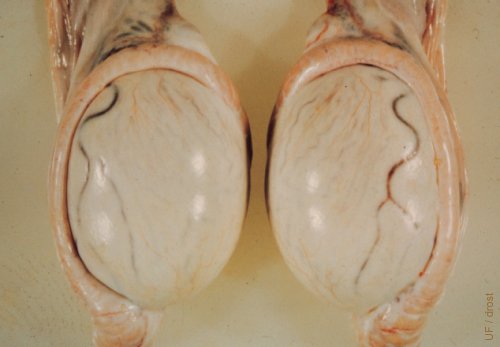
Normal Testes.
Normal symmetrical adult testes and epididymides.
Roberts SJ (1973)
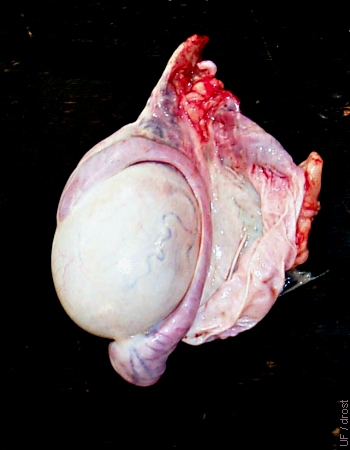
Lateral View of the Testis.
Lateral view of a normal left testis. showing the head (caput), body (corpus), and tail (cauda) of the epididymis. The body of the epididymis is oriented caudally.
Smith MC (2006)
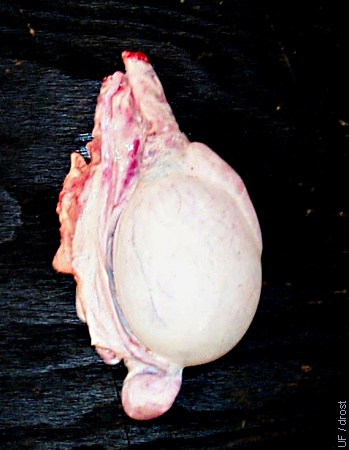
Medial View of the Testis.
Medial view of a normal left testis. showing the head (caput) and tail (cauda) of the epididymis and the vas deferens. The body of the epididymis is oriented caudally.
Smith MC (2006)
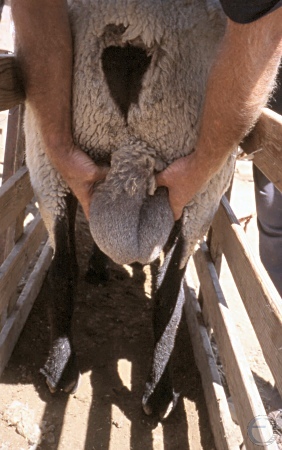
Three Testicles.
Two testicles could be palpated and delineated in the left side of the scrotum. In toto there were three separate testicles.
Villarroel A (2013)
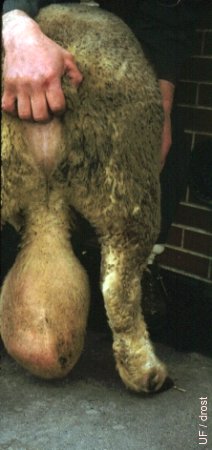
Severe Epididymitis.
Severe epididymitis of the left testicle of a young ram. Achromobacter species was recovered. (No brucella, nor chlamydia). Six more young rams out of a group of 100 were affected.
Roberts SJ (1972)
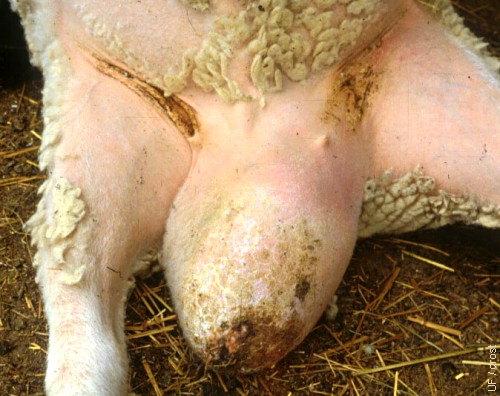
Epididymitis.
The distal scrotum of this ram lamb is enlarged and firm due to swelling and abscessation of the epididymis. The testis is no longer mobile within the scrotum.
Smith MC (2006)
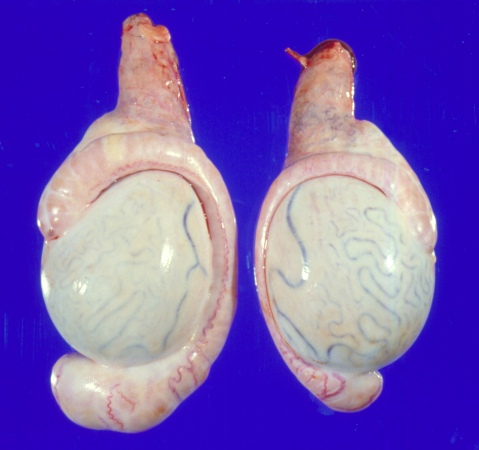
Early Stage Epididymitis.
The head and the tail of the left epididymis are enlarged, which can be appreciated more when compared with the normal right testis and epididymis.
Shipley C (2006)
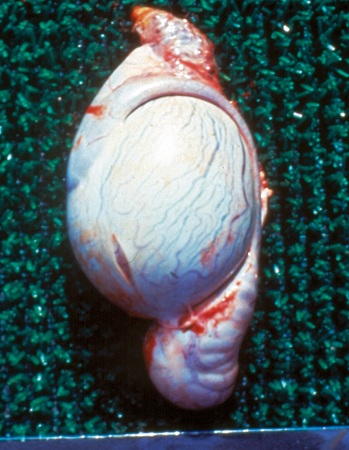
Enlarged Cauda Epididymidis.
The tail of the epididymis is enlarged and firm upon palpation.
Shipley C (2006)
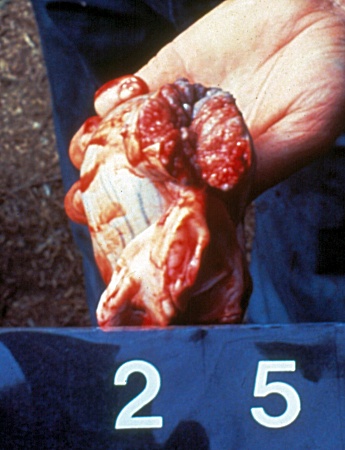
Enlarged Cauda Epididymidis.
Cross-section of the enlarged and firm tail of the epididymis.
Shipley C (2006)
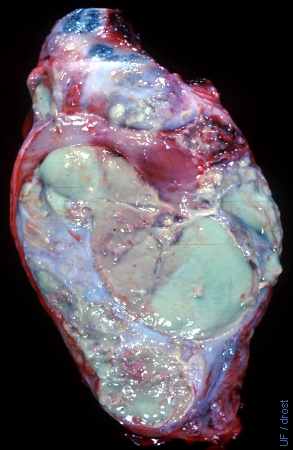
Testicular Abscessation.
Severe epididymitis and orchitis resulting in loss of parenchyma due to abscessation in a lamb. Arcanobacterium pyogenes and Corynebacterium pseudotuberculosis are among the causes.
Smith MC (2006)
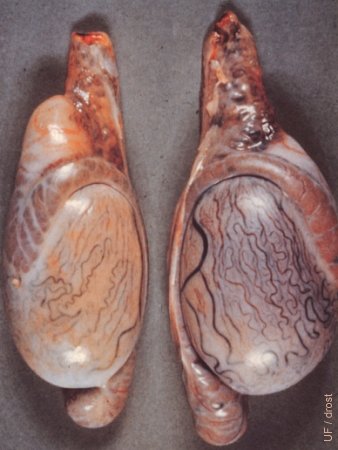
Sperm Granuloma.
The tail of the right testis is enlarged due to a sperm granuloma. This leads to blockage and reduced fertility. These rams should be culled and the remainder of the rams should be tested for Brucella ovis, the most common cause.
Roberts SJ (1973)
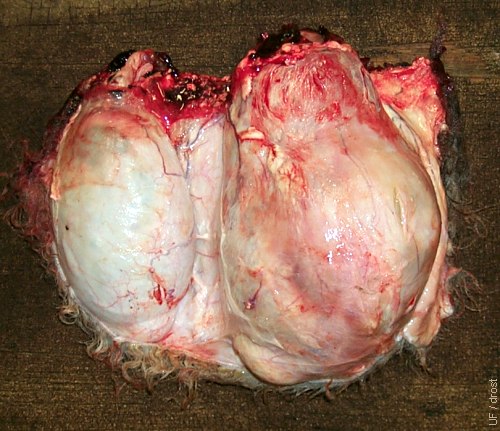
Testicular Varicose Veins.
Abnormal dilation of the veins on the surface of the testis caused by incompetent valves, resulting in impaired drainage of blood, and interference with the thermoregulatory mechanism.
Smith MC (2006)
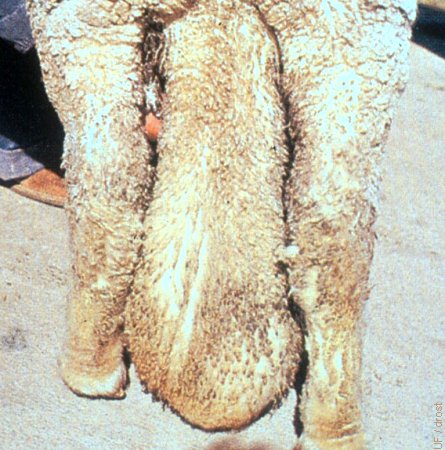
Gigantic Varicocele.
Extreme varicose enlargement of the veins of the pampiniform plexus.
Smith MC (2006)
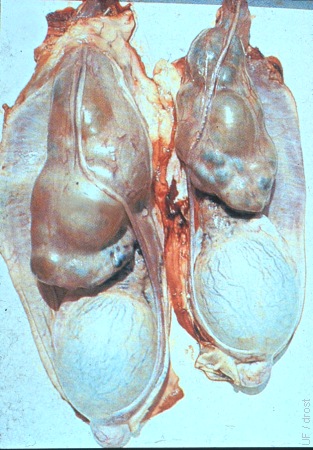
Varicoceles.
Bilateral varicoceles due to varicose enlargement of the veins in the pampiniform plexus of the spermatic cord. The thermoregulatory mechanism of the testicles is compromised.
Smith MC (2006)
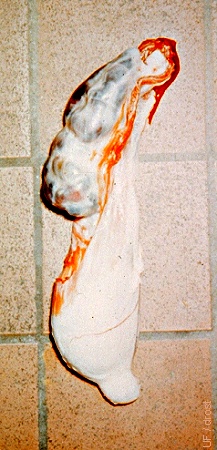
Pampinocele.
Pampinocele and thrombosis in the pampiniform plexus of the spermatic cord [size of the tile is 15 cm square].
Roberts SJ (1973)
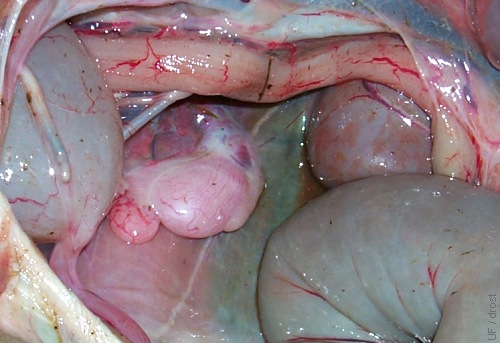
Unilateral Cryptorchidism.
One testis is located in the abdominal cavity near the bladder (on the left) of this ram lamb.
Smith MC (2006)
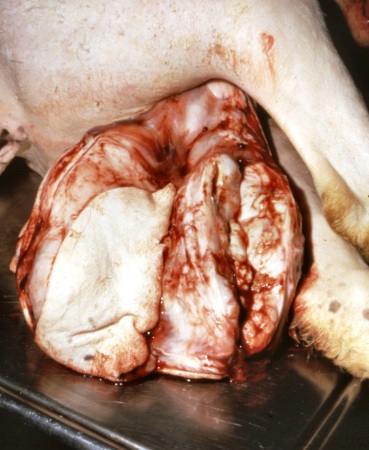
Orchitis due to Brucellosis.
Severe granulomatous orchitis due to Brucella ovis.
Nicoletti PL (1980)
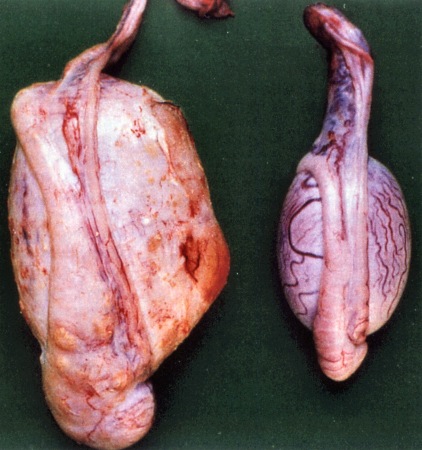
Brucella Melitensis.
The left testicle is grossly enlarged due to infection with Brucella melitensis. The right testis is normal in shape and size.
Nicoletti PL (1980)
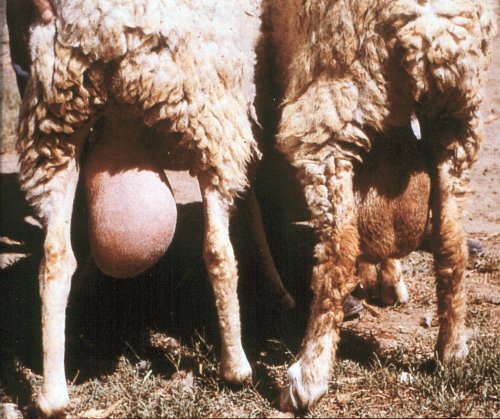
Testicular Brucellosis.
Enlarged scrotum due to bilateral orchitis as a result of Brucella melitensis infection. The scrotum and the testes of the ram on the right are normal.
Nicoletti PL (1980)
